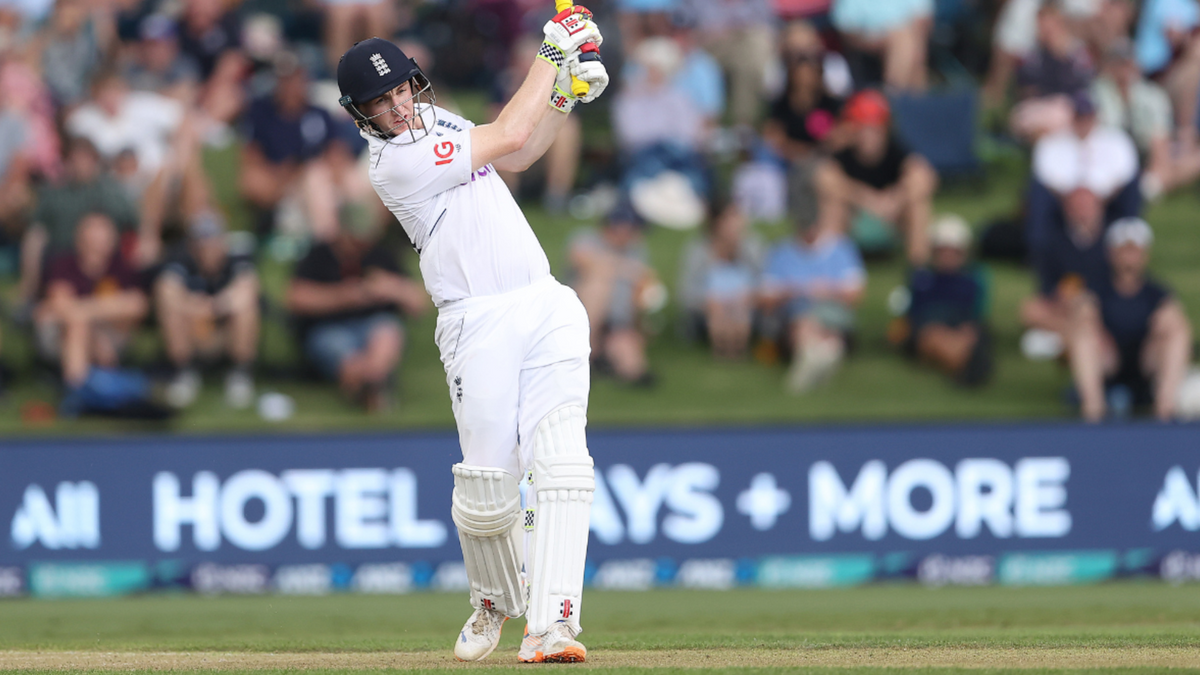
Harry Brook’s breakthrough winter has been nothing short of extraordinary. His spoils from the last six months of international and franchise cricket include a T20 World Cup winners medal, four Test centuries in six matches and an IPL contract worth seven figures.
But Brook hasn’t always been this prolific. While he has long been highly rated, notably captaining England at the 2018 Under-19 World Cup, until the end of 2020 his professional career had been unremarkable. At that point, his first-class career average stood at 24.25, and he had yet to truly make his mark in either white-ball format. Since then he has averaged 61.69 in first-class cricket – a figure that rises by the season – and the T20 runs have flowed at a rate and consistency that few can match.
The catalyst of this incredible success was seemingly a technical tweak with the help of his old school coach.
“I changed to doing a trigger movement, I think that’s been a lot of help for me,” Brook told The Telegraph in May last year. “It gets me into better positions, it gets my head into better positions, I’ve got better balance and it’s just helped my game all round.”
The trigger movement Brook has introduced to his game is small. He moves his back foot in line with off-stump as the bowler releases the ball, which sets him up to play the ball with his body directly in front of the stumps. This allows him to feel comfortable leaving the ball outside off stump while also having full access to flaying loose deliveries through the off side for boundaries.
“Before I was stood still, but now I have a little back-and-across thing and that helps my balance, weight and my head to go towards the ball,” Brook said in the same interview. “I play straighter and feel in a position now to play almost any shot.”
Not only has Brook racked up the runs in all formats this winter, but he has also earned a reputation as one of the most watchable cricketers in the world. His Test match strike rate sits a whisper below 100 at 98.77, and he has been a crucial part of allowing England’s attacking no-fear approach to succeed. In his best innings of the winter, the first against New Zealand at Wellington, the benefits of his new approach were clearly on show. Whatever Tim Southee, Neil Wagner and Matt Henry sent down to him, he put away with ease. He moved his feet well and put the bowlers off their lengths while also ensuring that trigger movement remained firmly in place.
A particular shot to Southee early on in Brook’s innings in that match was evidence of this. On 15 off 10, Brook came down the wicket to a shorter delivery and whipped his hands through the ball to put it away past point for his third consecutive four. While he’d danced down the wicket to make contact with the ball closer to its pitch, Brook’s original movement just before Southee released the ball was still to move his back foot across to off-stump.
Brook has credited his former batting coach while he was at Sedbergh in Cumbria, Martin Speight, with helping him introduce the trigger movement. Speight is a former first-class cricketer himself who played 193 matches in his career between 1986 and 2001.
Speaking to ESPNcricinfo last week, Speight said of his work with Brook: “[In the last few years] he started coming out of alignment. His hips would open up and his shoulders would open more. A bit like a piece of fusilli pasta. His bat ended up sliding across third, fourth or fifth slip, and anything moving, he ended up nicking it or missing it. Even a straight ball on occasions.
“By putting a trigger in, it loaded his core up ready to move and helped to align his body properly so that his bat could come down in a straight path.
“He was opening his hips up too much, so we fine-tuned that. Once we sorted that trigger out and got his weight 60-40 to his front foot, we got his head over the top of his body instead of drifting outside off stump.”
While Brook’s pre-delivery movements set him up in a good position to access the ball, his back-lift is what sets him apart from others and enables his aggressive approach. The toe of his bat points almost vertically upwards as he awaits the ball being delivered, keeping his hands high as he gets into position to play the ball. By having that high back-lift, he can generate more power on his shots, using fast his fast hands to whip through the ball.
The turning point in Brook’s ascendancy can clearly be seen from when he fine-tuned his movement with Speight at the end of 2020. In the 2021 T20 Blast, Brook was Yorkshire’s leading run scorer – fourth in the overall standings – averaging 69.42 across 13 games with a strike rate of 149.07. While he didn’t reach the heights of his run in the 2022 County Championship, his average in the competition significantly improved from 22.06 in 2019 (the previous full edition of the competition), to 37.95 in 2021.
In 2022 however, he took off – reaching 1,000 domestic runs across the Championship and T20 Blast by May. He finished the competition having scored three centuries in eight matches and averaged 107.44. That was after a winter where he’d scored his first T20 century, off 48 balls, in the PSL.
From there the rest is well documented. A small tweak with an old-school coach has led to a career start which will go down in history as one of the best ever. Undoubtedly there will still be change to come amid loss of form or confidence. But there’s no mistaking that Brook’s success is grounded in simplicity and a finely-tuned technical base.








